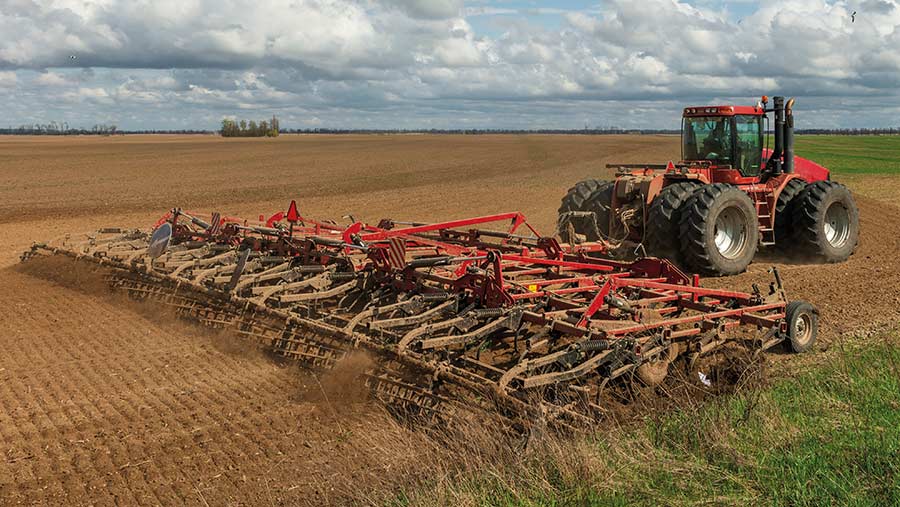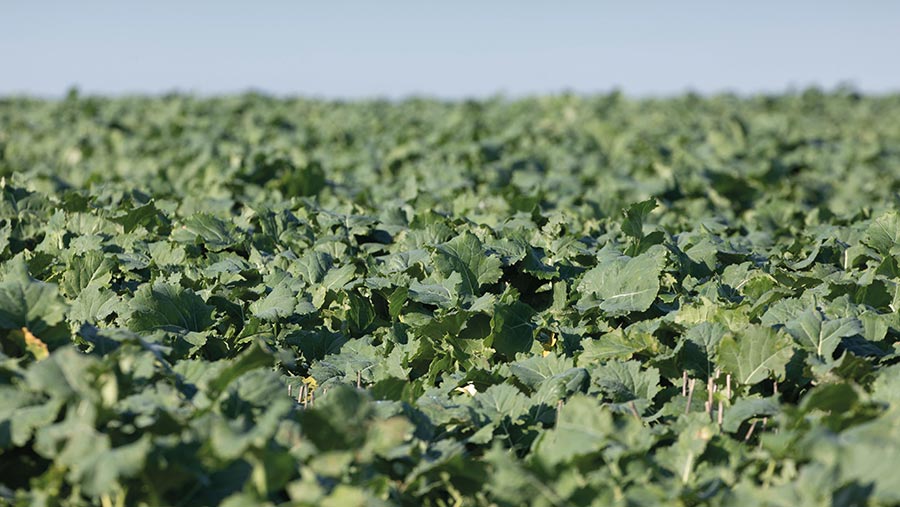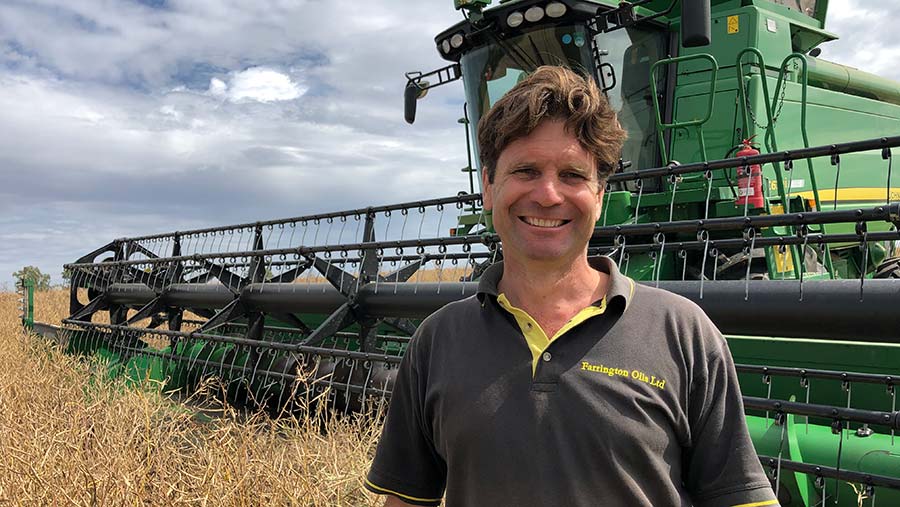How OSR growers are affected by Ukraine war and politics
 © Mny-Jhee/Adobe Stock
© Mny-Jhee/Adobe Stock International politics and the conflict between Russia and Ukraine remain key factors driving oilseed prices, with the two countries’ five-year averages accounting for 56% of global sunflower oil production and 74% of sunflower oil exports.
Sunflower oil currently makes up 11% of the oilseed market share and is a huge driver within the oilseed rape (OSR) market, which saw prices hit all-time highs of £900/t this year.
Prices have eased in recent months due to an agreement allowing vessels carrying foodstuffs to leave the Black Sea from the start of August.
Despite this, OSR prices remain volatile and historically high at more than £500/t.
See also: Crop Watch: OSR crop failures and aphids on wheat
UK OSR deficit
The UK’s domestic outlook for rapeseed for 2022-23 remains in deficit due to a declining cropped area associated with pest pressures and other establishment issues, explains Anthony Speight, senior analyst at the AHDB.
This means the UK will rely on exports to make up its net rapeseed consumption of 2m tonnes, of which about 50% is supplied domestically.
Mr Speight says: “Since 2019, Ukraine has been a prominent supplier to the UK, but supplies were severely impacted by the war.”
He says these effects could last for years, although global supply is predicted to rise, with stocks recovering for much of Canada, Australia and Europe.
Another watch point is the soyabean market as South American plantings begin, which could weigh on the rapeseed market.
Verdict on Ukraine harvest 2022
Roman Slaston, the director-general of the Ukrainian Agribusiness Club, provides a verdict on the quality and quantity of the Ukraine harvest, the logistics of moving it out of the country, and a planting forecast for the coming season.
Mr Slaston, who spoke at a recent AHDB webinar, says Ukraine has harvested 16m tonnes of oilseeds, including 3m tonnes of rapeseed.
Yields were regionally dependant, but nationally they were higher than expected, averaging 2.9t/ha.
The main rapeseed growing areas are in west and central Ukraine, with the south experiencing lower yields due to lack of rainfall.
Additionally, growers in the south lost 200,000ha of 2021 autumn-sown rapeseed because of the Russian invasion.
The war started at the end of February 2022 and had a significant impact on plantings.
Mr Slaston explains that Ukraine harvested 25% less grain for the 2022 harvest – including 53-55m tonnes of wheat, barley and maize.
Farmers also face high natural gas prices, making drying grain expensive. Lack of storage capacity is also a challenge, with farmers using polymer bags as a temporary solution.

© Tim Scrivener
Expectations for harvest 2023
Rapeseed planting for the 2023 season began at the end of July and is almost complete. A total of 1.1m-1.3m ha is currently sown.
High input costs and short supply of fertiliser, coupled with low grain prices in the country, have reduced the margin for grain and encouraged a switch to rapeseed.
Consequently, wheat and barley area is expected to be down by an average of 25-30%.
For spring cropping, Mr Slaston says there will be an increase in the sunflower and soyabean area at the expense of maize.
The maize-growing regions are in the centre and north of the country, and the cost of transporting crops, including insurance and freight, to southern ports is between $150-$180/t (£133-£160/t) depending on location.
This is further driving the switch from grains to oilseeds.
Exports and inputs
The volume of grain leaving the country via grain corridors is expected to reach 4m tonnes over the coming months.
Mr Slaston says about 2.5m tonnes of goods are being exported to the EU via rail, trucks and the river Danube.
In September, 21% of rapeseed left the country by road, 18% by rail and 61% by sea and river.
Fertiliser application is predicted to fall by 40% for the 2023 harvest because of high prices and lack of availability.
Lack of finance is another issue. Ukrainian farmers have been holding large stocks of grain and are unable to sell. Internal prices are low, often below the cost of production.
All of this is posing a big challenge for inputs for the 2023 harvest, and yields are expected to decline.
However, the situation could change, especially going into spring if the grain corridor remains open and the financial situation improves.
The impact on a UK grower and processor
International politics has hugely affected Northamptonshire farmer Duncan Farrington’s oilseed rape pressing business Farrington Oils, forcing him to raise prices.
Mr Farrington grows OSR and processes cold-pressed rapeseed oil, sold under the Mellow Yellow brand as a certified carbon- and plastic-neutral product.
He was one of the first in the UK to grow, press and bottle rapeseed oil on the 290ha family farm, near Hargrave, where he grows the crop to Leaf marque standards.

Duncan Farrington © MAG/Emma Gillbard
The farm produces only 10% of the OSR required for the factory, which runs 24 hours a day, seven days a week.
The remainder is bought in from other Leaf marque accredited farms, but volatile markets and record high prices have proved a real struggle for the business.
“If we go right back to the beginning of 2021, rapeseed was £350-£400/t,” he says.
“The Canadian droughts hit, which affected the price with rates beginning to climb. Then the war began and the prices rocketed to figures we had not seen before.”
At one point he bought his most expensive load of rapeseed at £876/t, which, including bonuses, took the overall price close to £1,000/t.
“It came as a real shock from a food producer and branding point of view,” he says. “How were we going to cope? It was an incredibly scary ride.
“As a small brand in a domestic market we are influenced by international politics affecting our input prices.”
The business is also under pressure from a doubling of energy costs, and Mr Farrington is pinning his hopes on government measures to reduce the impact.
The cost of the glass bottles has gone up 20%, and there are supply issues with cardboard packaging, which saw price hikes and availability issues as online shopping took off during the coronavirus pandemic.
“It is the cost of the oil, the cost of the packaging products and the cost of the energy required to produce our product,” says Mr Farrington.
“For the first time in our history, we had to put the price up for all of our customers across the board – whether it was restaurants, supermarkets, the local farm shop or wholesalers.
“This is never an easy conversation to have.”

